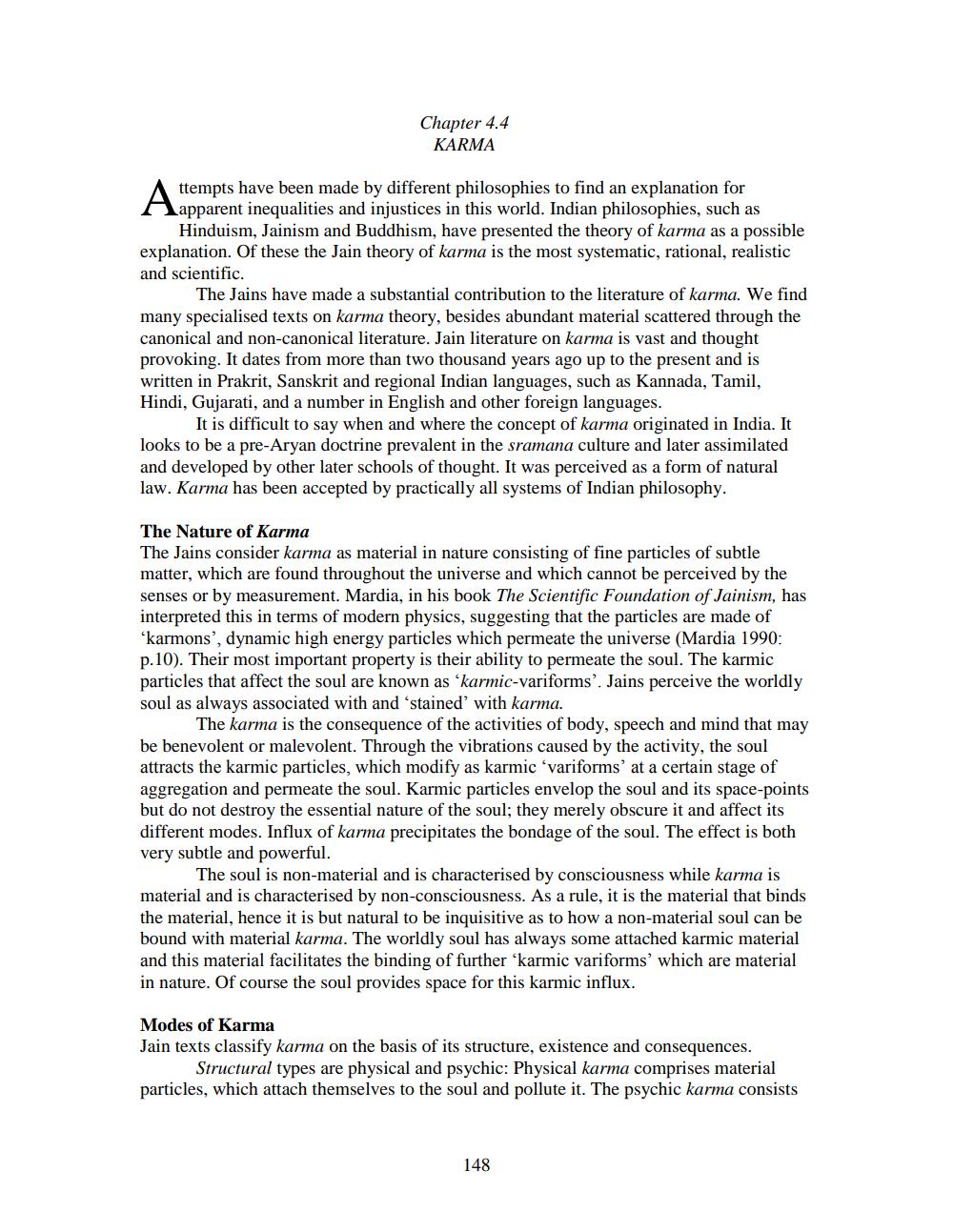________________
Chapter 4.4 KARMA
ttempts have been made by different philosophies to find an explanation for Alapparent inequalities and injustices in this world. Indian philosophies, such as
Hinduism, Jainism and Buddhism, have presented the theory of karma as a possible explanation. Of these the Jain theory of karma is the most systematic, rational, realistic and scientific.
The Jains have made a substantial contribution to the literature of karma. We find many specialised texts on karma theory, besides abundant material scattered through the canonical and non-canonical literature. Jain literature on karma is vast and thought provoking. It dates from more than two thousand years ago up to the present and is written in Prakrit, Sanskrit and regional Indian languages, such as Kannada, Tamil, Hindi, Gujarati, and a number in English and other foreign languages.
It is difficult to say when and where the concept of karma originated in India. It looks to be a pre-Aryan doctrine prevalent in the sramana culture and later assimilated and developed by other later schools of thought. It was perceived as a form of natural law. Karma has been accepted by practically all systems of Indian philosophy.
The Nature of Karma The Jains consider karma as material in nature consisting of fine particles of subtle matter, which are found throughout the universe and which cannot be perceived by the senses or by measurement. Mardia, in his book The Scientific Foundation of Jainism, has interpreted this in terms of modern physics, suggesting that the particles are made of 'karmons', dynamic high energy particles which permeate the universe (Mardia 1990: p.10). Their most important property is their ability to permeate the soul. The karmic particles that affect the soul are known as 'karmic-variforms'. Jains perceive the worldly soul as always associated with and 'stained with karma.
The karma is the consequence of the activities of body, speech and mind that may be benevolent or malevolent. Through the vibrations caused by the activity, the soul attracts the karmic particles, which modify as karmic 'variforms' at a certain stage of aggregation and permeate the soul. Karmic particles envelop the soul and its space-points but do not destroy the essential nature of the soul; they merely obscure it and affect its different modes. Influx of karma precipitates the bondage of the soul. The effect is both very subtle and powerful.
The soul is non-material and is characterised by consciousness while karma is material and is characterised by non-consciousness. As a rule, it is the material that binds the material, ence it is but natural to be inquisitive as to how a non-material soul can be bound with material karma. The worldly soul has always some attached karmic material and this material facilitates the binding of further ‘karmic variforms' which are material in nature. Of course the soul provides space for this karmic influx.
Modes of Karma Jain texts classify karma on the basis of its structure, existence and consequences.
Structural types are physical and psychic: Physical karma comprises material particles, which attach themselves to the soul and pollute it. The psychic karma consists
148




